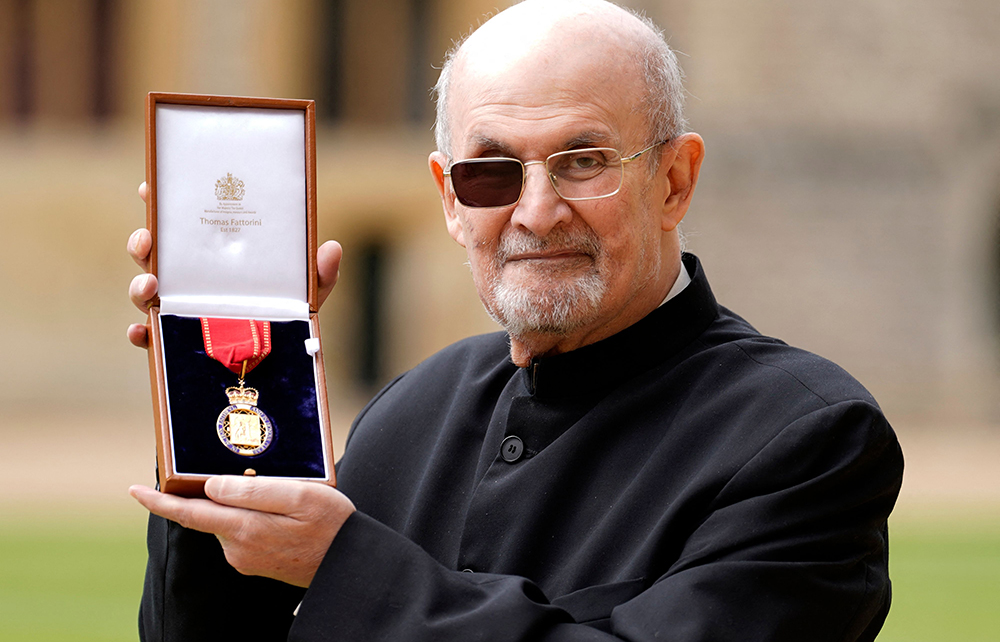I have just come back from spending some days with David Hockney at his house in Normandy. We are making a film about him – the longest film about a single subject I have ever attempted. Like Monet’s, Hockney’s environment is his subject. The great sequence of ‘The Four Seasons’ is from his grounds. He finds all the different blossoms he needs there, and there is a river and a pond. His friend has turned an old barn into a magnificent studio. David is in his mid-eighties but is as sharp as he was the first time I interviewed him for The South Bank Show in 1978. Since then, there have been several films, on his exploration of photography and the camera (and the distinction between those two), on Chinese scrolls, on the countryside near Bridlington and now there is another move forward with his remarkable new exhibition Bigger & Closer (not smaller & further away) at Lightroom Kings Cross. He has had more than 400 exhibitions and his hundreds of iPad sketches have revolutionised that medium, or indeed created it as a medium. He works from dawn to dusk every day, save when there are interruptions like filming or travelling. He fulfils one of the best remarks about art, delivered by Blake: ‘Without unceasing practice nothing can be done.’ An hour or two after the crew had packed up and were ready to leave, I went to say goodbye in his studio and… he was painting. I think there is something of the genius about him.
I went across to Trouville while I was staying with Hockney, and was struck by the extraordinary neatness and order of the place. In the hotel were massive black and white photographs of Trouville in Edwardian times when those going for a walk along the front seemed dressed as if setting out for a ball. Magnificent dresses, immaculate suits. At this particular time, the front was more or less deserted, which had the advantage of showing up the layout – chalets, playgrounds, boardwalks – to the neatest possible advantage. It can be annoying to see how well the French look after their past, but to eat fish fresh from the sea wherever you are is as good as it gets.
This Saturday Carlisle United will be in the play-off finals at Wembley trying to move up a league. The triumph of Wrexham has given new zest to many small clubs and we can only hope Carlisle is one of them. In the early 1950s, the team drew with Arsenal in the FA Cup and a busload of Arsenal fans came to my father’s pub in Wigton and were treated as if they themselves were the stars. The town came to see these Arsenal people – it must have been one of Dad’s best nights. Needless to say, Arsenal won the replay at Highbury. When my seven-year-old picked a London team it was our nearest, which is Arsenal – the golden years under George Graham and Arsène Wenger. But oh dear, Arteta, what have you done?
Salman Rushdie and his wife Rachel are in London and the literary agent Caroline Michel gave a lunch for them. There were about 16 of us, including Salman’s two sons and, among other writers, Antonia Fraser. I sat next to Antonia, now 90 but as sharp as ever. Salman wore spectacles. The right lens was black where he has lost an eye. He did not mention the New York incident once. I remember when I interviewed him after the declaration of the fatwa: he never mentioned that either. We talked about Martin Amis, whom he saw often in New York, and Borges and other writers. His memory is still astonishing. He was awarded a Companion of Honour by Princess Anne that morning. He was persuaded to wear it throughout lunch.
Last Saturday night, I went to a concert in the Hampstead parish church. The composer Michael Berkeley had organised a musical evening with work from his father Sir Lennox Berkeley (a friend of Benjamin Britten, who was Michael’s godfather) and William Bird, as well as Michael’s own recent work which is as good as anything he has done. There was a choir more than a dozen strong which rang the music around the church beautifully. Wine at the interval and for me, a warm walk downhill home. Hampstead, which was just a lucky hit as far as I was concerned many years ago, has turned out to be a place of infinite variety: two magnificent hardware stores, two bookshops, two cinemas, proper pubs, continental-rivalling cafés, the Heath – extraordinarily well preserved, despite decades of predators trying to get their hands on it – and its swimming pools, the great Kenwood House, playgrounds for the children… And, increasingly valuable as the clock ticks on, the unrivalled Royal Free hospital – just at the end of my road! What more could anybody want?






Comments